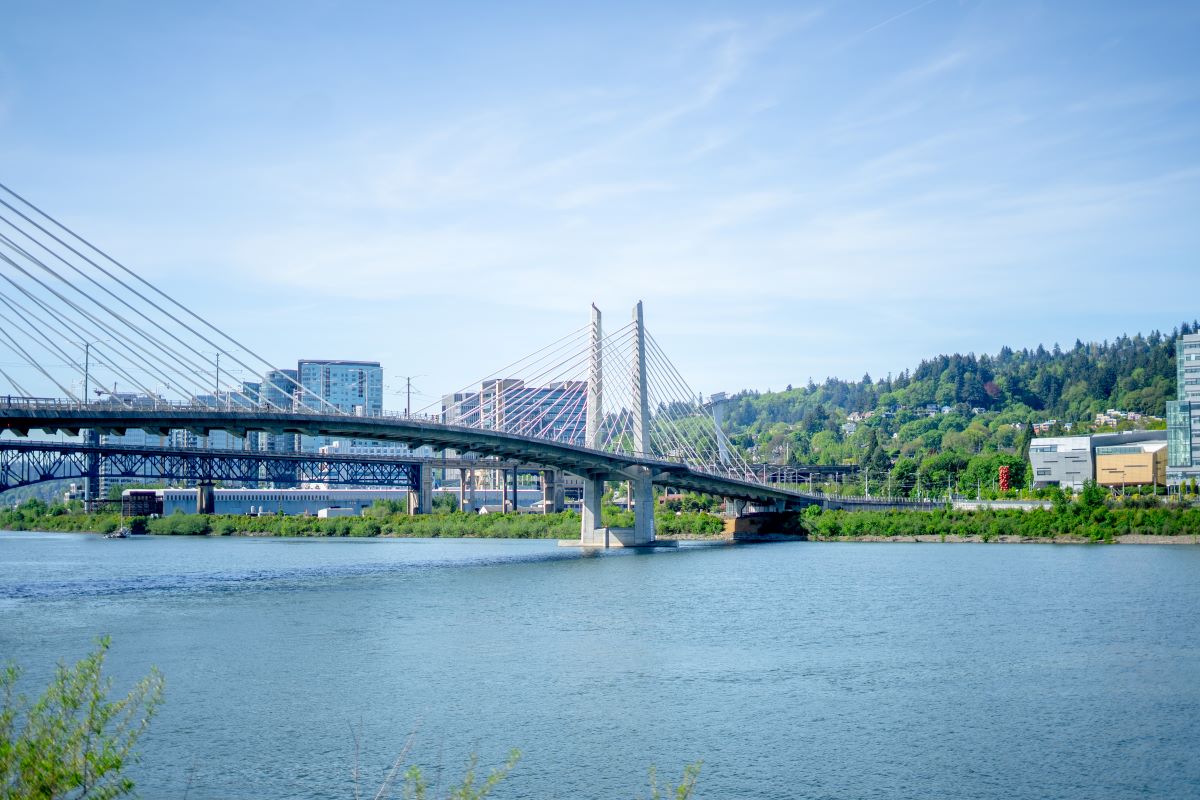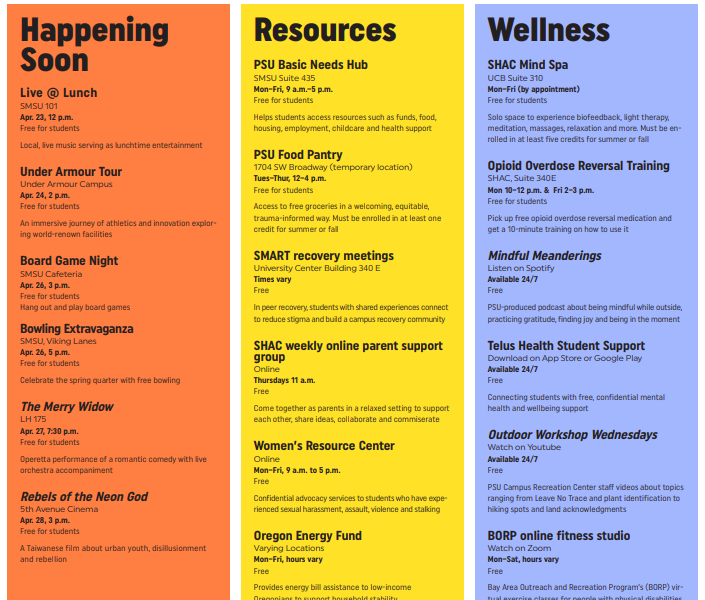Known for its scenic beauty and vibrant culture, Portland is also home to a network of bridges crucial for its transportation infrastructure. In light of recent bridge collapses such as the Francis Scott Key Bridge in Baltimore, there’s a growing interest in understanding the safety measures and technologies which protect Portland’s bridges.
Donald MacDonald is an architect who helped develop suspension bridge designs for the Tilikum Crossing, which spans the Willamette River in Portland. The crossing is intended for bikers, pedestrians and light-rail riders. MacDonald highlighted the significance of factors like clearance under these types of bridges.
“The bridges in Portland have a 60-foot clearance, making them less vulnerable to large vessels,” MacDonald said. This clearance minimizes the risk of collisions—an essential safety measure.
“The bridges are basically designed with a huge buttress below the tower legs that can take an impact,” MacDonald said. “There’s a big pyramid of rocks below the pile cap, which is the base of the tower. So they hit this pyramid-shaped rock before they get to the tower base.”
“The big tankers or the big container ships are the real concerns,” MacDonald said. “Because we made them [container ships] so big nowadays. They have a tremendous amount of force if they’re moving and not controlled.”
Dr. Franz Rad—Professor Emeritus from the department of civil and environmental engineering at Portland State—emphasized the probabilistic nature of bridge design. “We can’t afford to design bridges to withstand impacts from ships which weigh millions of tons,” Rad said. “We have to look at the weight and the speed of travel instead. Bridges are designed with safety factors considering various loads, including dynamic forces like earthquakes, wind and ice.”
This approach attempts to balance ensuring structural integrity and avoiding excessive costs.
“We have a standard policy in various states on how we do the inspection and make sure that the deterioration of the metal, concrete or wood used is inspected and noted in the reports, and they are rectified,” Rad said. “Sometimes we have to change, revamp or retrofit them in some ways, which is done annually, except when some of the departments of transportation don’t have the person, power or the funding to do it every year… So they do it every other year or every three years.”
The age of the bridge also influences how frequently it needs to be revamped or retrofitted. Newer bridges are more reliable, because they were built with more modern stability concerns in mind.
Patrick McLaughlin—a Professor teaching civil and environmental engineering at PSU—discussed advancements in bridge design for seismic resilience and flood mitigation. “Newer bridges incorporate features like enhanced seismic resistance and flood protection, reflecting evolving safety standards,” he said.
“We as an engineering community come up with standards that we think are reasonable to design, be it buildings or bridges or any element based on what’s likely to occur over the lifespan of that element,” McLaughlin said. “And typically most bridges have inherent in their design an idea that they’re probably gonna last for 50 to 100 years. The Baltimore bridge had exceeded that 50-year mark, and so it still was in its useful life, but it’s hard to forecast that far in the future to consider all the various possibilities of loads or risks that might occur over that time span.”
In many ways, our bridges would be at a similar risk. McLaughlin pointed out how older bridges—such as the Fremont Bridge, the Saint John’s Bridge and certainly any of the bridges along the Columbia Gorge, such as the Glenn Jackson Bridge—would be vulnerable to risk, as they are located in major shipping corridors.
“Energy absorbers or exterior crash diverter structures that would absorb the damage and prevent the pier itself from taking the damage [are some] of the safety measures that can be adopted,” McLaughlin said. “Those types of technologies have been used in some more modern bridges where the risk from larger ships have taken on a higher probability.”
Regular inspections and maintenance are integral to ensuring the safety of bridges. Kacey Davey—Public Information Officer at the Oregon Department of Transportation (ODOT)—emphasized their meticulous inspection procedures. “All bridges are inspected every two years,” Davey stated. “Every year, ODOT publishes a detailed report about the condition of each of the 2,773 bridges across our state.” These inspections adhere to national standards and evaluate bridges based on condition ratings.
Only a few bridges in Oregon are vulnerable to the type of crash we witnessed in Baltimore, because Oregon sees few ships of this size.
Moreover, the piers of major bridges are typically protected by steel or timber piles driven into the riverbed known as dolphins. Many bridges are also built with fenders. The fenders protect the bridge from collisions with ships and debris in the water during storm events. The fender systems are built to handle these impacts. The Astoria-Megler Bridge is an example of a bridge with large fenders on its foundations.
Multnomah County Transportation Division Director Jon Henrichsen underscored the importance of disaster response plans for bridge maintenance. In the event of significant damage, the county staff and engineers inspect and evaluate the bridge’s safety before it can be repaired and reopened to the public.
“New bridges, like the Wapato, Sellwood, and the future Burnside Bridge are required to be designed to not collapse after impact from the largest vessel that can operate on the river,” Henrichsen stated.
Looking ahead, computer modeling and material science advancements offer promising avenues for enhancing bridge safety. “Advances in analytical work and material properties will improve bridge design accuracy and longevity,” Rad said.
Through a blend of meticulous design, regular maintenance and ongoing innovation, these structures ensure the safety and well-being of our community. As we learn from recent incidents and embrace technological advancements, Portland continues to lead the way in bridge safety, setting an example for cities worldwide.






